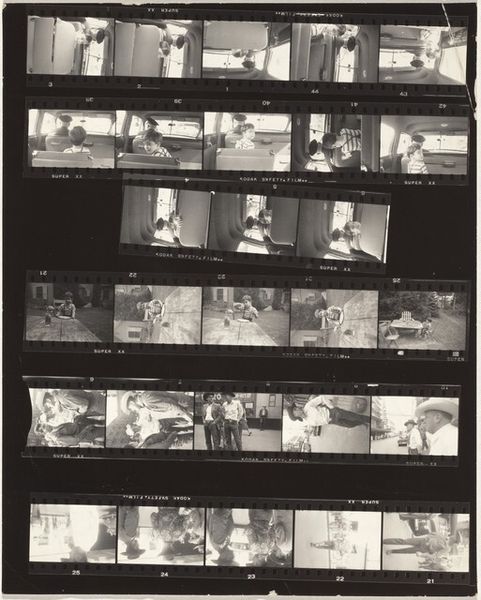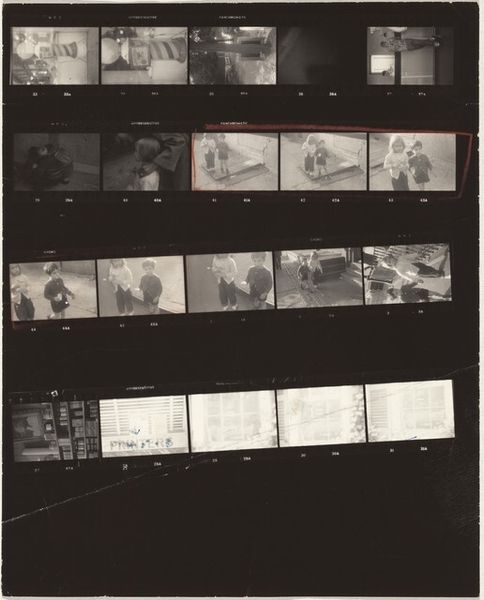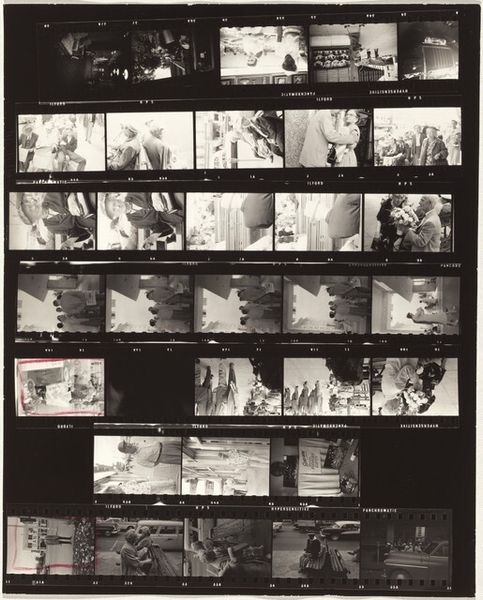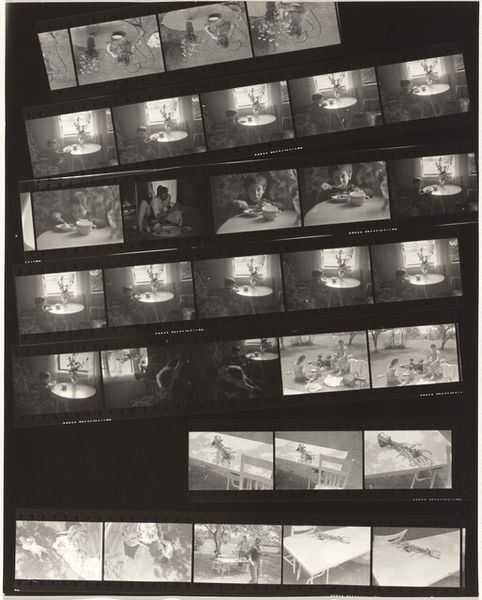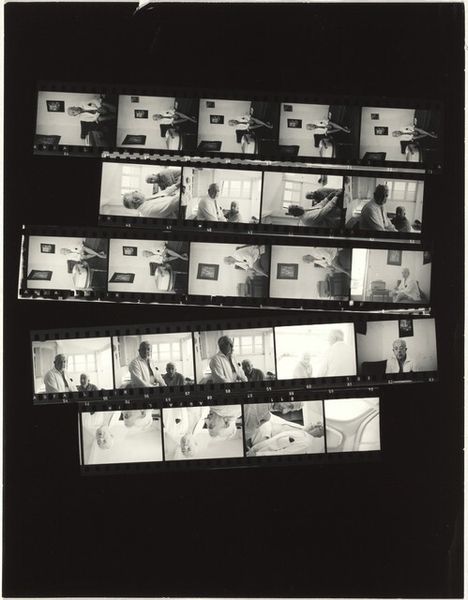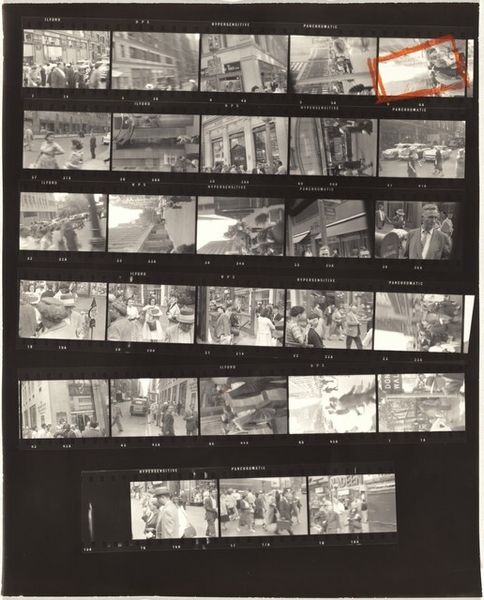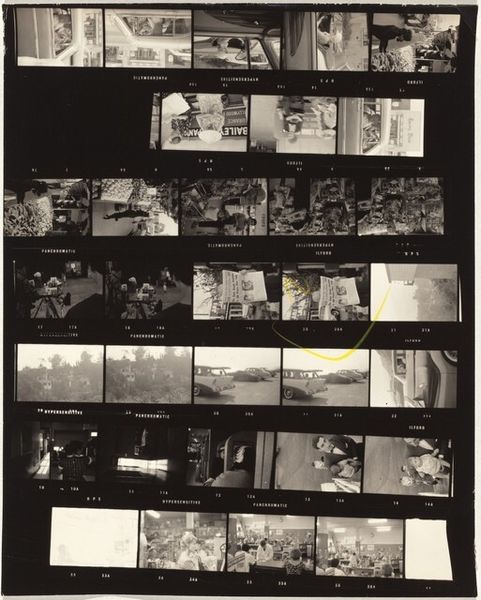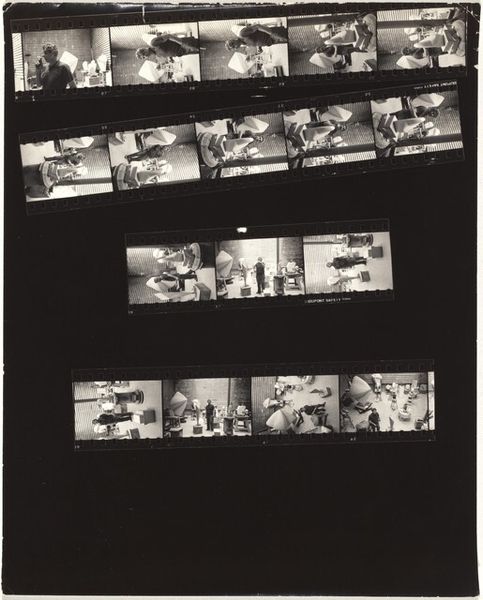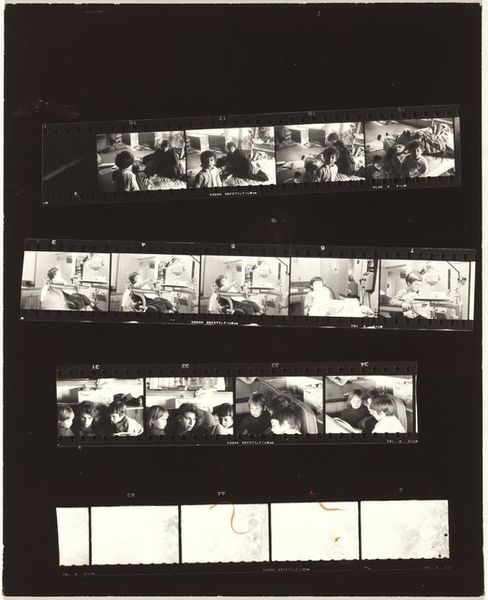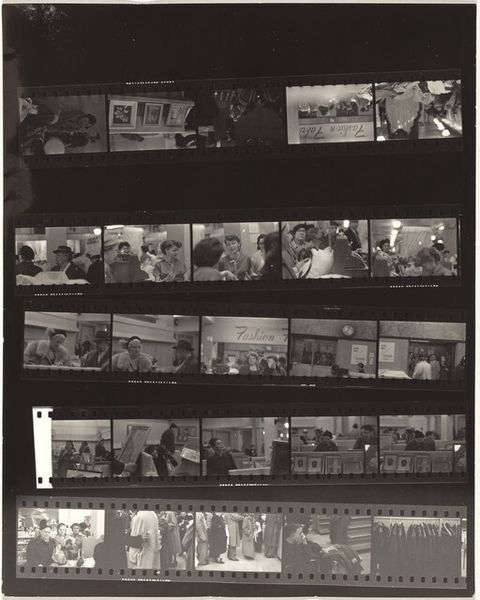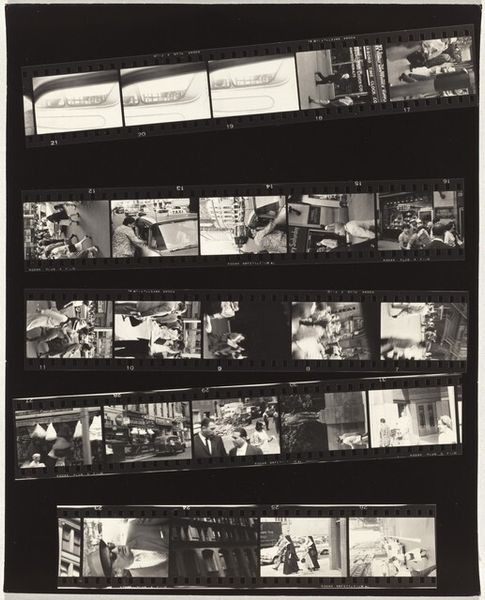
photography, gelatin-silver-print
#
film photography
#
archive photography
#
street-photography
#
photography
#
historical photography
#
gelatin-silver-print
#
monochrome photography
#
monochrome
Dimensions: overall: 25.2 x 20.2 cm (9 15/16 x 7 15/16 in.)
Copyright: National Gallery of Art: CC0 1.0
Editor: We’re looking at “Paris 9,” a 1959 gelatin silver print by Robert Frank. It shows multiple frames from a film roll. What I immediately notice is how it makes visible the photographic process itself. How does this work contribute to our understanding of the everyday? Curator: Frank’s deliberate display of the film roll emphasizes the photographer's choices, revealing the editing process and suggesting that the construction of the image is just as crucial as the captured moment. By displaying the entire roll, Frank democratizes the photographic process, almost suggesting photography as an act of simply witnessing and collecting fragments of reality. What sociopolitical influences do you think enabled Frank to produce this work? Editor: It’s interesting to think about the democratizing effect, and maybe this approach aligns with post-war sentiments toward greater accessibility and a break from more traditional, rigid art forms? But where does Frank fit into the existing canon? Curator: Frank, through works like "The Americans" and images like this one, significantly reshaped street photography, influencing how we perceive post-war society and the role of the photographer within it. Think about how museums have historically curated photographs – emphasizing either aesthetics or documentary value. How does Frank challenge that? Editor: So, by showing the whole roll, he's rejecting this division, pushing back against that established curatorial voice? Curator: Precisely! He is resisting that imposition of hierarchy, opening the doors for different ways of seeing and exhibiting the photographic work. And by doing so, raising questions about the relationship between photography, society, and art institutions themselves. What's your take on this shift? Editor: I see that now. I initially focused on the visual element, but now understand the artist's gesture has social implications in relation to power and exhibition. Curator: It reveals how photographic art shapes—and is shaped by—historical context, its own making, and its reception within the larger world. Editor: This changed the way I'll look at photography from now on. Thanks!
Comments
No comments
Be the first to comment and join the conversation on the ultimate creative platform.
